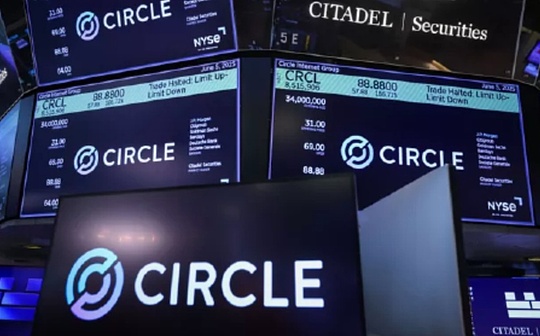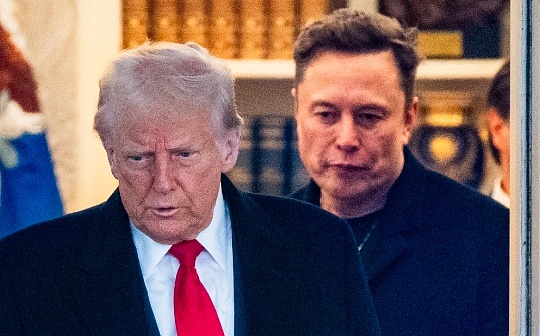Does memecoin have "basics"?

Reprinted from jinse
06/09/2025·9DAuthor: Michael Nadeau Compiled by: Vernacular Blockchain
Why choose Memes?
Beta
We like certain memecoins simply because they have high beta for Layer 1 (L1) assets. Simply put, a small amount of configuration of memecoins like BONK (Solana Ecology Cultural Coin) can provide a leverage effect on L1 assets without actually leveraging (avoiding liquidation risks).

Data: The DeFi Report
The signal we are looking for is when 30 days (pink) over 90 days of scrolling beta (red - last happened on April 1). When this happens, the average 30-day and 60-day returns for BONK were 124% and 413% (medians 45% and 57%, respectively).
Price: Bonk vs SOL

Data: The DeFi Report
We can see that the transition of risk appetite patterns tends to be fast, and BONK significantly outperforms in a short period of time. This highlights the importance of buying at the right inflection point (which we will discuss later in the report).
The BONK outbreak usually occurs simultaneously with SOL's rise +5% in a week. Here is the average return for BONK in this case:
-
Average 1-week return of 26%, median 14%
-
Average 30-day return of 141%, median 11%
-
Average 60-day return of 512%, median 27%
About 1/3 of the case, BONK is actually down – which shows that SOL's performance does not guarantee BONK's excellent performance. Still, most of these happen before BONK’s explosive rise at the end of 2023.
Bonk vs SOL Relevance
As shown in the figure below, BONK is usually associated with SOL. However, during periods where BONK performed well (Q4, Q4, 2024, Q1, Q4, 2024, and April this year), this correlation tends to weaken.

Data: The DeFi Report
Key points:
BONK has high beta for SOL during 30-day, 60-day and 90-day rolling, and beta is higher from the perspective of absolute returns. This means that BONK usually rises and falls far more than SOL—making it a high-risk/high-return asset.
We regard BONK as a leveraged bet on SOL, but we do not have to assume leverage (liquidation risk).
We use BONK/SOL as a data example, but the same conditions apply to other "blue chip" memecoins and their relationship with L1 assets, such as PEPE/ETH.
Next, turn to on-chain data analysis…
On-chain data
In addition to understanding the performance of memecoin relative to its L1 pair, we also like to use on-chain data for quantitative analysis.
This can tell us the relative quality and beliefs of the holder's foundation.
Below, we compared some top "blue chip" memecoins to find outliers.
Token holders growth (90 days)
Token holder growth provides a perspective on the recent popularity and virality of Token.

Data: The DeFi Report
Median vs. Average Holdings
Help us understand the median and average holders’ beliefs of Token holders. Please note that some memecoin communities are more centrally managed than others. For these tokens, you will notice that the median hold is low, because a large amount of small airdrops are allocated to many wallets.

Data: The DeFi Report
Holders of > $1000 (%)
This once again provides us with a holder-based vision
horn. We want to see a higher percentage of wallet holding > $1k as an indicator of interest and belief.

Holders of > $100k (%)
This provides us with insight into the relative interest and beliefs of large holders in Tokens relative to the total number of holders.

Data: The DeFi Report, Dune
Giant whale retention rate
With this metric, we look at all wallets that once held > $100k Tokens, and these wallets still hold more than 50% of their peak units (to remove the noise caused by price fluctuations).
This helps us measure the beliefs of the largest holders.

Data: The DeFi Report, Dune
Giant Whale: DEX Net Inflow/Outflow
Here we filter all wallets that once held > $100k Tokens and analyze the inflow/outflow of these wallets to DEX.
This provides us with insights on whether the largest holders will buy more tokens or exit the project.

Data: The DeFi Report, Dune
Other factors
In addition to on-chain data, we are only interested in memecoins that have sufficient transaction liquidity and have experienced multiple callbacks of more than 50%.
Please note that our data only view on-chain activity and does not include tokens held by centralized trading platforms (BONK is approximately 20%).
For tokens traded on major trading platforms, we like to view open contract volumes. The open contract volume shown below mainly comes from Bybit.

Data: Glassnode, The DeFi Report
Community/Faith
Here, more crypto-native intuitions come into play, involving monitoring social media activity and emotions.
We like to filter through memecoin's "potential audience interests". For example, it must be something that is acceptable to the world (such as the SPX6900's "supervailable stock market" - it sounds silly, but has the potential to attract attention/form movement).
What we are looking for:
Resonant good narrative + community slogan. You don't have to identify with it, just see others accept it.
Signs of strong belief, and a sense of belonging in the community (which transforms the holder into an evangelist).
Signs of leadership and coordination (we observe this in memecoins such as BONK, SPX6900, and Giga).
Signs of embedded culture (Pepe Meme is an example).
We are beginning to notice that some communities are now promoting projects through TikTok to reach younger potential crypto users.
The best memecoin community is often an excellent marketer.
Fair value
How to know if you buy at "fair value"?
We believe that the clearest way is to understand the relationship between realizing value (agents on all Token cost basis in circulation) and market value.
When the MVRV ratio is below 1, it indicates that the holder (on average) is in an unrealized loss-making state – this indicates that we may be close to the local bottom, assuming that the bull market conditions will continue.
The implementation price of BONK is currently $0.0002. At the time of writing, the Token trades at $0.0000145 – indicating that this may be a good entry price.
- As mentioned earlier, the implementation price does not take into account the Token supply of the trading platform. According to Solscan data, we estimate that about 20% of BONK supply is held on centralized trading platforms (BN, Robinhood, Coinbase, Kraken, etc.).
MVRV

Data: Glassnode, The DeFi Report
kinetic energy
In the absence of fundamentals, another way to evaluate "fair value" is to look at kinetic energy indicators.
Relative Strength Index (RSI)
RSI helps us understand whether Tokens are overbought or oversold in terms of recent momentum.
-
RSI approaches or below 30 indicates an "oversold" status.
-
RSI approaches or exceeds 70 indicating an "overbought" status.

Data: The DeFi Report
Moving Average
Another way to view recent momentum is to analyze the relationship between price and key moving averages. We hope to buy strong when prices break through key support areas, but only if we have confidence in the 3-6 month time frame.

Data: The DeFi Report
Google Search
Finally, analyzing Google Trends and other social sentiment metrics can help us understand when to buy/sell.

Data: Google, The DeFi Report
Liquidity Cycle/Macro
We must mention that memecoins are at the farthest end of the risk spectrum. As we all know, BTC relies on liquidity conditions, and memecoins is even more so. Favorable liquidity/economic environment, combined with the “risk preference” sentiment and the return of “animal spirit”, is the key to your assignment to memecoins.
Summary and thoughts
Together, you'll get a framework that covers the following:
Why we like certain memecoins(beta) as a very small part of our portfolio.
How to identify memecoins (on-chain data) with strong "fundamentality".
How to measure "Fair Value" (MVRV).
When to buy (turning point/macro/momentum).
When to sell (Kinetic Energy/RSI).
Of course, this does not make the framework foolproof. There is no easy return in investment. Excessive performance can only be accompanied by higher risks.
Nevertheless, having a system should help you navigate the wild west of this memecoins.



 chaincatcher
chaincatcher
